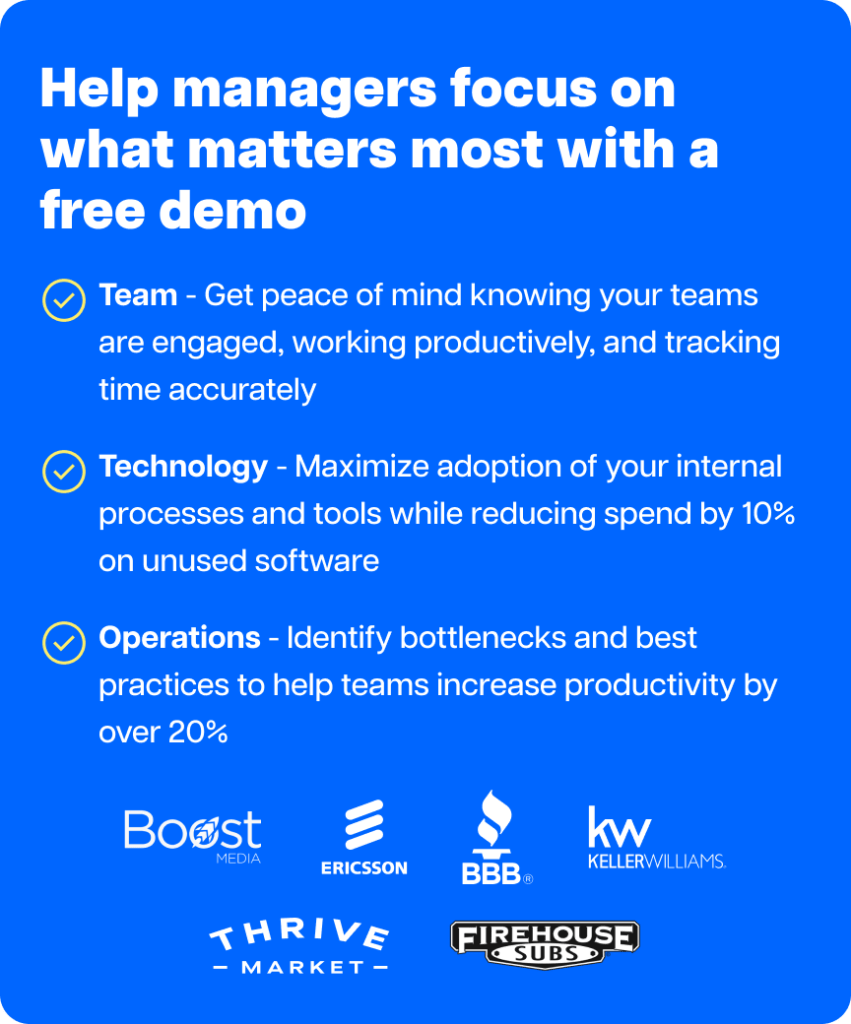Interested in call center attendance management?
Managing attendance is crucial as every call center needs a sufficient number of agents present for each shift. Only then can you keep clients satisfied and meet service level goals.
These agents also need to be on-time because their tardiness can have a ripple effect on the entire call center’s operations.
That’s why companies need an effective way to manage the attendance of call center agents.
In this article, we’ll discuss what call center attendance management is and some of its challenges. We’ll also highlight some practical solutions to make managing attendance easier.
This article contains:
(Click on the links below to go to a specific section)
- What Is Call Center Attendance Management?
- 3 Biggest Call Center Attendance Challenges
- 5 Practical Solutions To Manage Call Center Attendance
- 3 Benefits Of Call Center Attendance Management
Let’s get started.
What is call center attendance management?
Call center attendance management is how organizations manage the daily attendance and working hours of call center agents. This includes tracking their billable hours, scheduling shifts, recording time off, etc.
Why is it important?
If attendance management isn’t a priority to a contact center business, it can be detrimental to productivity and the company overall.
You may not be able to achieve your goals or reach your KPIs (Key Performance Indicators). Additionally, it will also affect your bottom line.
When you don’t have enough agents to answer calls, customers will become irate, and you risk losing their business.
If this happens too often, you may not have enough clients left to sustain your company. That’s why you need an accurate way to manage attendance.
3 biggest call center attendance challenges
Let’s take a look at some common attendance issues your call center might encounter:
1. High absenteeism
Managers work hard to properly schedule call center shifts based on call volumes, employee availability, and other metrics.
Excused absences for jury duty or an occasional sick day are one thing, but the unscheduled absence of multiple agents is another.
Unexcused absence puts additional pressure on the agents present, which can leave them frustrated and cause discord among the team members.
Staff who are constantly picking up the slack for their no-show co-workers are also more likely to stay off work themselves in the future.
High employee absence also frustrates customers because of the longer time they’ve to spend on hold. Fewer available agents lead to more abandoned calls and a heavier workload on everyone present.
2. Excessive tardiness
An agent occasionally running late is expected.
However, when the same agents are consistently late, it can impact the rest of the team.
You may think being a few minutes late to work is not a big deal.
But in a call center, tardiness affects productivity and has a ripple effect across the entire business. Those on-time agents have to work extra hard, taking on the work of those that are frequently tardy.
Additionally, latecomers cost the company money.
How?
Suppose an agent is ten minutes late each day. Over some time, those ten minutes add up substantially. Over a month, it could add up to 4 hours.
Essentially, you’ll be paying your agents for the hours they haven’t worked.
3. Inefficient attendance records
Suppose your call center is still recording time and attendance the old-fashioned way — with a punch card or manual entry system.
In that case, you’re probably not getting completely accurate data about agents’ attendance.
Why?
With manual entry systems, there is too much room for error. And with punch-clock machines, agents can clock their friends in even when they aren’t working.
Additionally, just because a worker is physically present in the building doesn’t mean they are working.
They could be wasting time —watching YouTube videos, scrolling through social media, or playing games online.
5 practical solutions to manage call center attendance
Here are the most efficient ways to manage and improve agent attendance:
1. Develop an attendance policy
It’s essential to have an employee attendance policy in place, and all agents should have access to it.
This way, your agents understand your attendance expectations. It also highlights the importance of regular attendance and punctuality.
The attendance policy will also outline the consequences of not adhering to these rules and guidelines.
Learn How To Create An Employee Attendance Policy (2021 Guide).
2. Creating a pleasant working environment
High absenteeism is usually related to stress or dissatisfaction among your team.
When employees find the work environment too tiresome, they’re more likely to take sick leave.
One way to ensure agents come to work regularly is to provide them with a working environment in which they want to be.
Some ways to lighten the mood in a busy, stressful call center include:
- Regular breaks: Encourage agents to take frequent breaks, especially when they feel overwhelmed.
- Break rooms: Ensure agents have a comfortable space to take breaks and eat lunch away from the hustle and bustle of the call center floor.
- Social interaction: Promote social interaction among agents. This will encourage teamwork and increase employee engagement.
3. Adopt flexible working arrangements
You could consider allowing agents a degree of flexibility with their working arrangements. For example, allow them to work from home a few days a week.
Having the flexibility to work from home is likely to result in fewer sick days and time off. It’ll also help boost employee morale.
All you’ll need to do is offer your agents the necessary tools for call center work.
4. Providing attendance incentives
To motivate agents to attend work regularly, consider offering them an attendance incentive.
Here are a few incentives that may motivate your team:
- Annual cash bonuses for perfect attendance.
- Merit increase in salary tied to good attendance.
- Longer lunch breaks, planned early departure, or other scheduled time off.
- A free paid day off for agents who meet schedule adherence requirements.
- Special gifts for agents who never missed work in a calendar year. This could include electronics, free trips, or gift cards.
5. Use software to accurately track agents hours
To effectively manage call center attendance, you’ll need the right solutions.
Online attendance tracking software like Time Doctor will help you keep accurate time and attendance records. This way, you know how every agent is performing, as well as their start and end times.
What is Time Doctor?
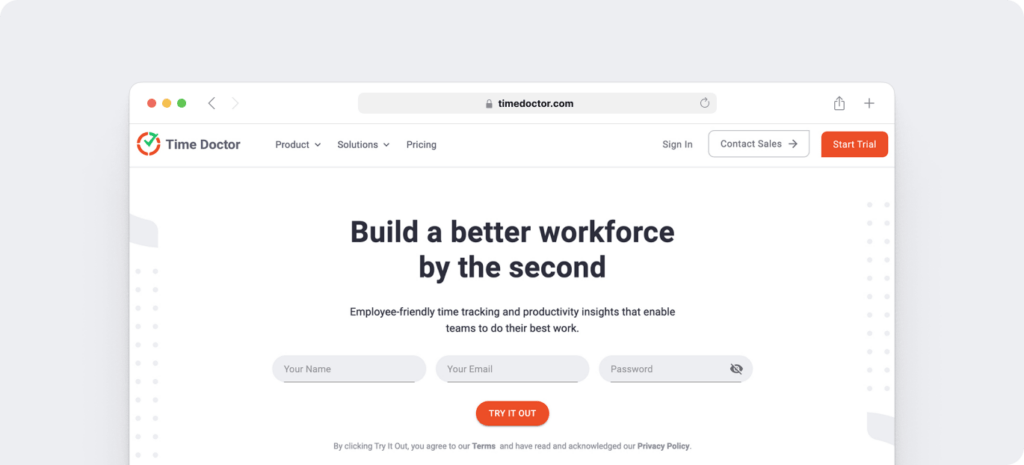
Time Doctor is a time and performance management solution used by startups, SMBs like Firehouse Subs, and larger organizations like Ericsson to enhance productivity.
You can use it to track each agent’s attendance, billable hours, schedule shifts, and so much more.
Key features
Here are a few of Time Doctor’s key features:
1. Time and activity tracking
Time Doctor’s accurate time tracking feature lets you track how long each task takes down to the second.
Here’s how you can track time manually:
- Open Time Doctor.
- Enter the task you’re working on.
- Click the “Start” button – it will start the timer.
- Click the “Stop” button to stop the timer.
Time Doctor will track the hours each employee works. It also tracks the individual projects and tasks they work on.
2. Attendance reports
You can generate Attendance Reports to view a record of every planned and unplanned absence.
It also lets you see why the employee was late because your team can add notes about attendance.
It’s also a lot simpler to evaluate past absenteeism because you can customize these reports based on the information you need — for example, a particular project, date, or individual.
This allows you to recognize excessive absenteeism and immediately address attendance issues.
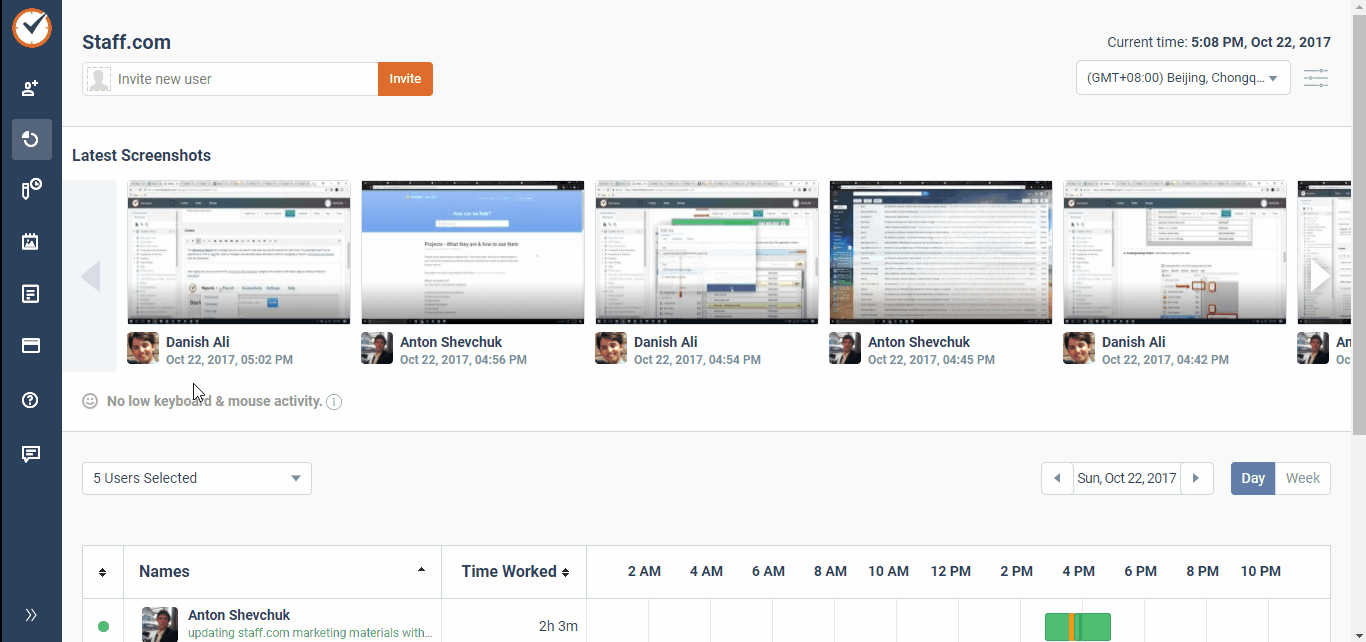
3. Timesheet reports
This report shows the total amount of billable time worked by an agent, for any given day or across a selection of dates.
All agents can access their own timesheets — allowing them to keep track of their own time and attendance. Each call center manager or supervisor also has access to the timesheets of the agents they manage.
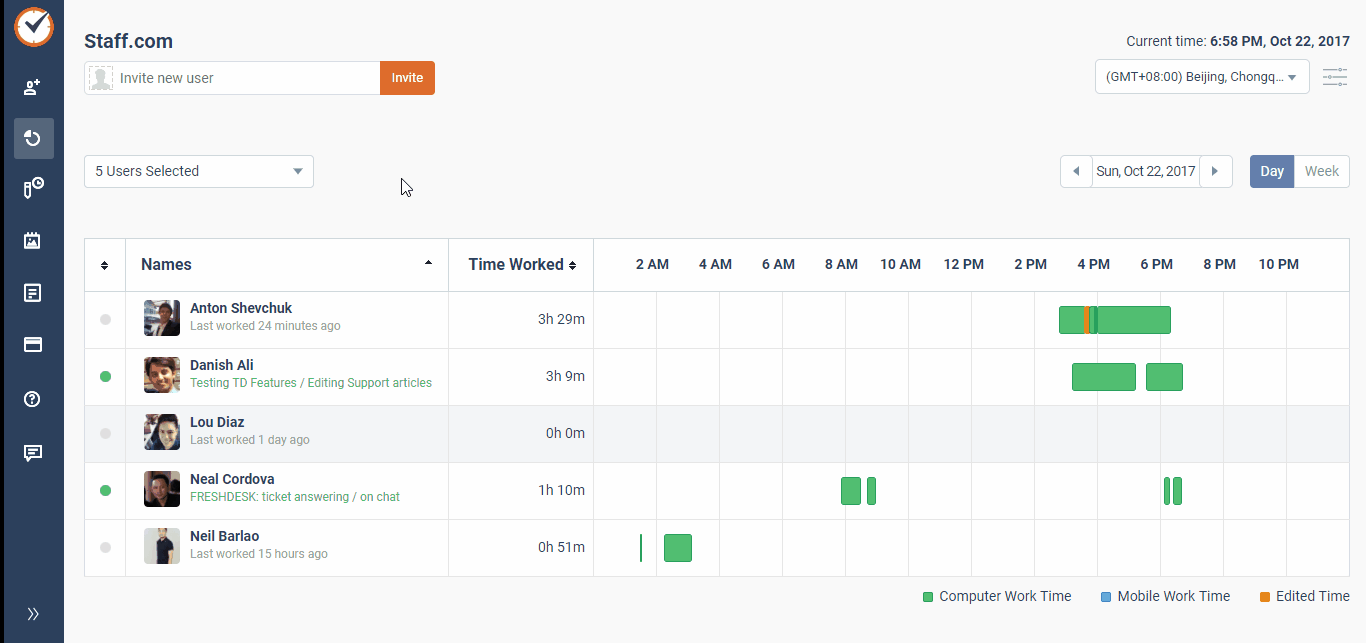
But these aren’t the only reports you can generate with Time Doctor.
Other insightful reports include:
- Time use report: Contains a breakdown of the time an agent spent on each task for a particular period.
- Timeline daily report: Shows details of how an agent spends their time.
- Web and app usage report: Shows the websites visited by each employee during work hours and the amount of time spent on them.
- Poor time use report: Identify if your agents are spending too much time on distracting sites like Instagram or Facebook.
- Projects report: Provides you with a breakdown of the time spent by an agent on a particular project or task.
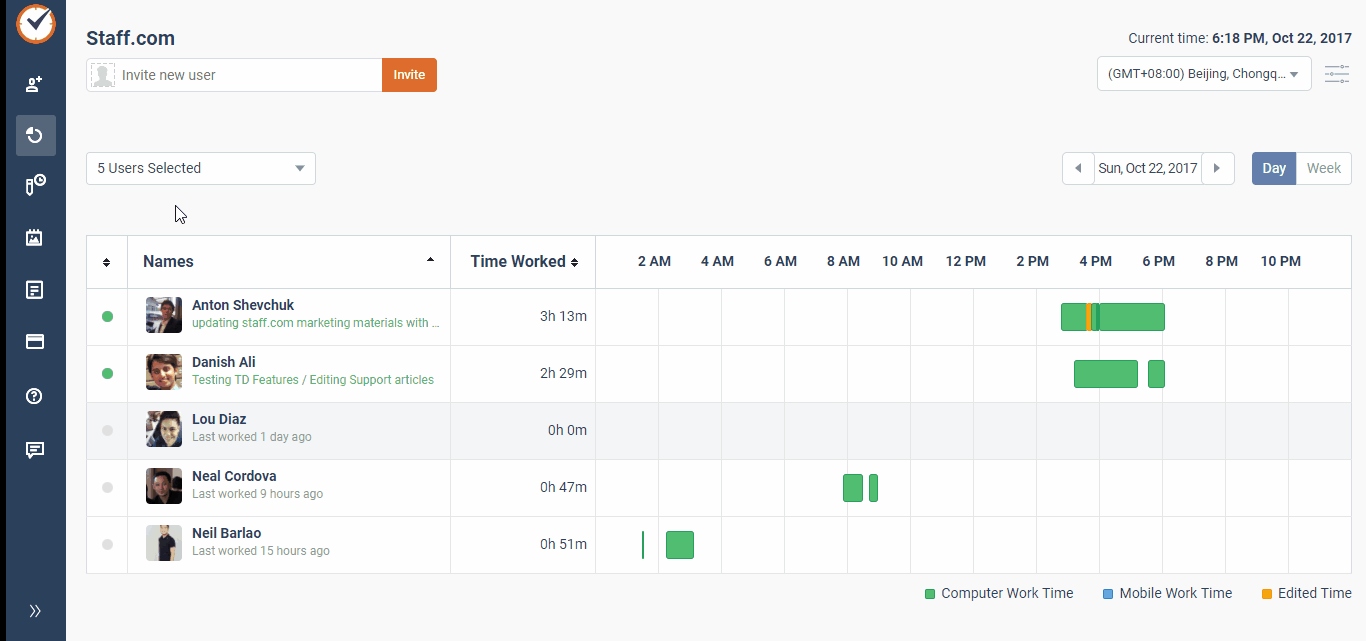
4. Work schedules
This feature is a great scheduling tool.
The Work Schedules feature lets you set shifts for any agent on your team. This way, you can easily monitor whether they were late or absent for a scheduled shift.
So, if you set the work schedule as 10 am to 5 pm from Monday to Friday:
- Time Doctor will mark agents ‘present’ if they track time before or at 10 am.
- Time Doctor will mark agents ‘partially absent‘ if they start tracking time at 1 pm.
- Time Doctor will mark agents ‘absent‘ who don’t track time at all.
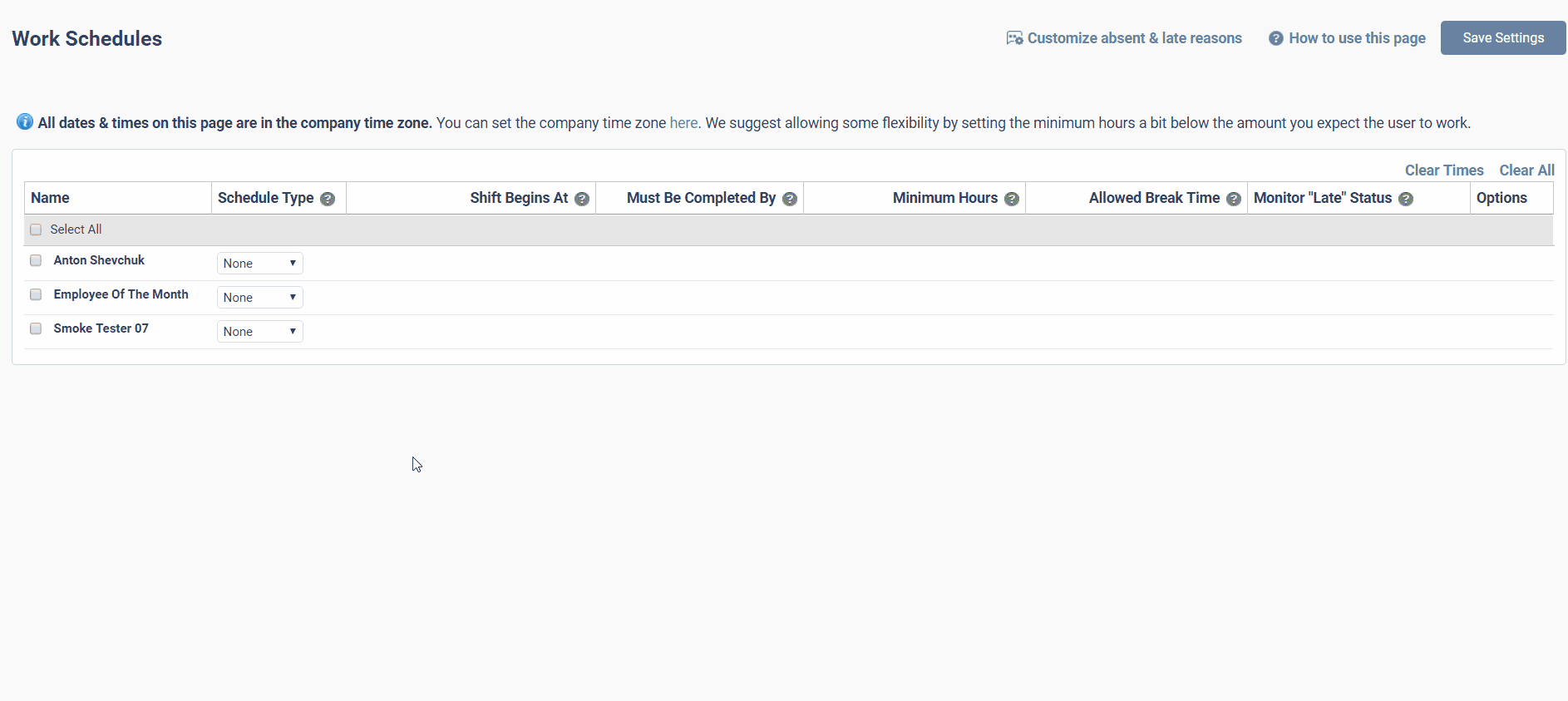
This feature lets you save time and ensure the accuracy of any attendance record.
It also makes shift scheduling so much simpler because it allows you to set different work schedules for various agents.
Note: Admins are the only ones who can view and edit work schedules for everyone in the organization.
5. Simplified payroll
Thankfully, you can do away with complicated and error-prone Excel spreadsheet formulas to calculate payroll.
Time Doctor’s Payroll feature makes it simple to accurately pay your call center agents based on precise billing hours.
Here’s how it works:
- Customized payroll: Customize your payroll for pay periods and currencies.
- Timesheet automation: Automate timesheets to make payments at specified times (monthly or weekly). You can set up payroll for salaried agents or those paid hourly.
- Bulk billing: Upload your timesheets for bulk billing instead of processing each team member’s salary individually.
- Timesheet approval: Approve timesheets before payroll processing (manually or automatically.)
- Payroll system integration: Integrate with your preferred payroll solution, like Payoneer and PayPal.
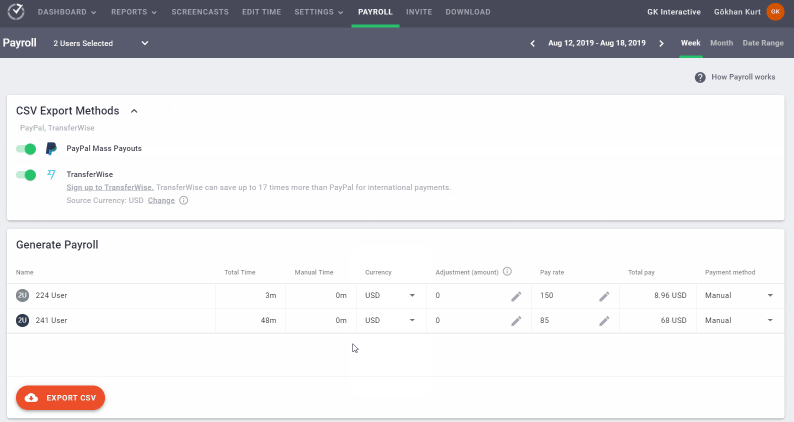
Note: The business owner is the only one that can enable the Payroll feature.
Having accurate records will help you plan and schedule shifts better. It’ll also offer your agents more flexibility to work remotely because you can track time from anywhere.
3 benefits of call center attendance management
Attendance management is an essential aspect of workforce management.
It will lead to smoother work processes for you and your agents and positively affect your company’s bottom line.
Here are a few other reasons to prioritize call center attendance management:
1. Easier HR management and payroll
An efficient attendance management system has clear benefits for your human resource department.
Having a system to record attendance will help process payroll more accurately and quickly.
How?
By recording billable hours, you can quickly access the data you need to process payroll. It also makes it easier to track sick time, calculate family and medical leave (FMLA), etc.
Additionally, if you’re accurately recording employee working hours, you can pay them more precisely. In other words, you won’t be paying them for hours they didn’t work due to tardiness or absenteeism.
2. Even work distribution
Addressing attendance problems will ensure that punctual agents don’t have to take on the workload of consistently absent employees.
Once you identify the agents that aren’t attending work regularly or are excessively late, you can address the problem with them.
You could adopt a progressive discipline approach.
For an agent’s first infraction, you could give them a verbal warning. If the absenteeism continues, you can deliver a written warning.
This is usually enough to motivate agents to start coming in regularly and on time.
If not, the company can take further disciplinary action and let go of problematic agents. This will allow you to move on to new recruits with a better work ethic.
Additionally, the rest of the team doesn’t have to take on more work to accommodate those agents who aren’t attending work regularly.
Keep in mind that an uneven workload can cause division among teams.
Having everyone pull their weight is fair, and agents will get along better. This will also ensure team morale is high.
3. Improved productivity and customer experience
Two things that directly impact your company’s revenue are productivity and customer satisfaction.
If you want to ensure high levels of both, attendance management is a must!
Employee productivity in a call center directly impacts customer service. In other words, how quickly agents answer and address client calls affects customer satisfaction.
High absenteeism will affect the rate at which agents attend to client calls.
You’ll need to implement proper attendance management systems to pinpoint this excessive absenteeism.
Additionally, you can use the same tool to analyze time spent on tasks and estimate your staffing requirements for each shift.
Time Doctor has useful analytics that you can use to evaluate time spent on tasks and projects and plan better. This way, you can avoid being understaffed and ensure a better customer experience because there are a sufficient number of agents to answer calls.
Final thoughts
Poor attendance is one of the biggest concerns facing call center businesses today.
While traditional ways of attendance management may have worked in the past, they aren’t accurate or adequate for today.
Fortunately, call center attendance management in 2021 doesn’t need to be complicated. That’s why we’ve highlighted the best strategies and tools for the job.
Time tracking software like Time Doctor will help you take your attendance management to the next level. It accurately records the time and provides detailed data to analyze agents’ attendance and productivity.
So why not sign up for Time Doctor’s free trial today to give your agents’ attendance a boost!

Liam Martin is a serial entrepreneur, co-founder of Time Doctor, Staff.com, and the Running Remote Conference, and author of the Wall Street Journal bestseller, “Running Remote.” He advocates for remote work and helps businesses optimize their remote teams.

